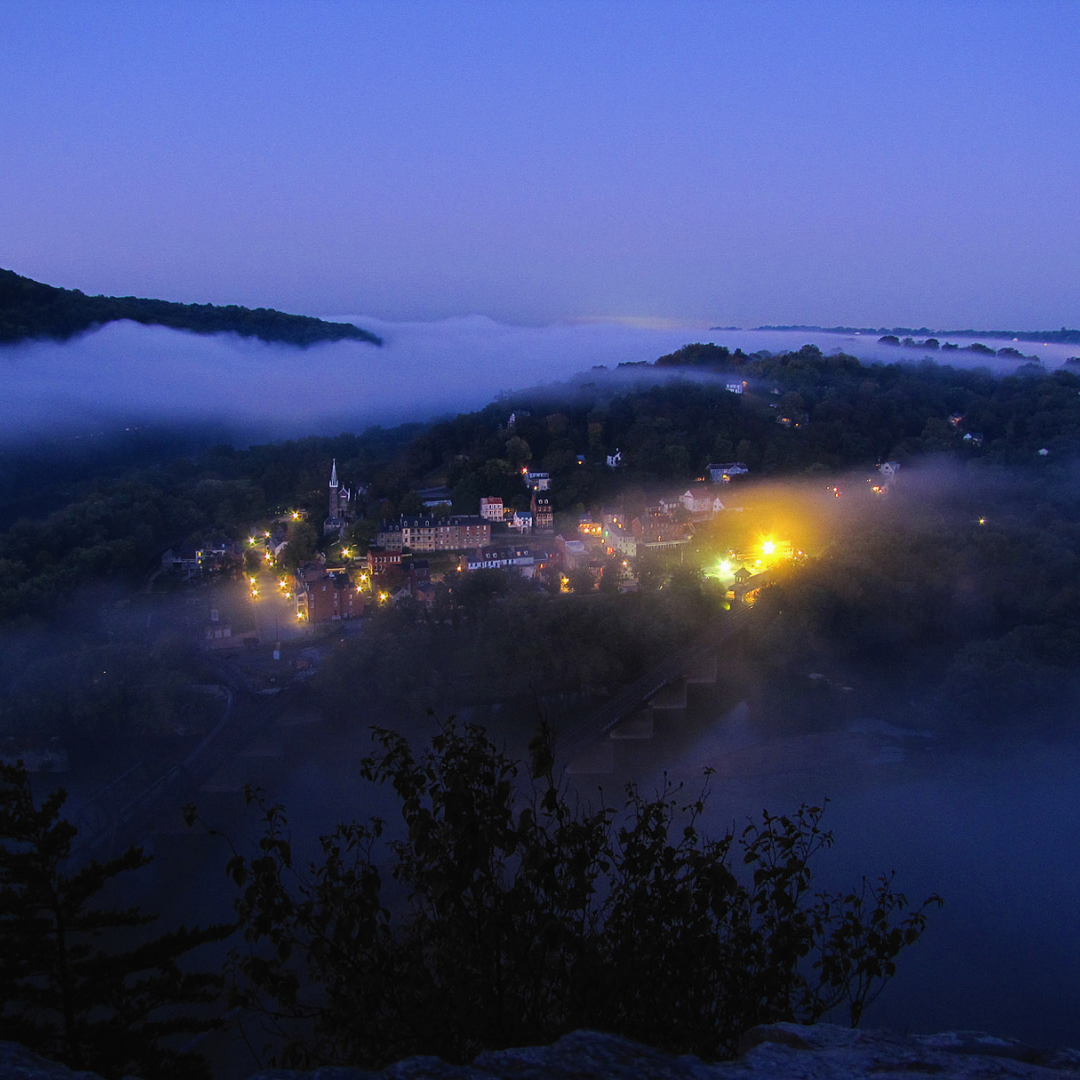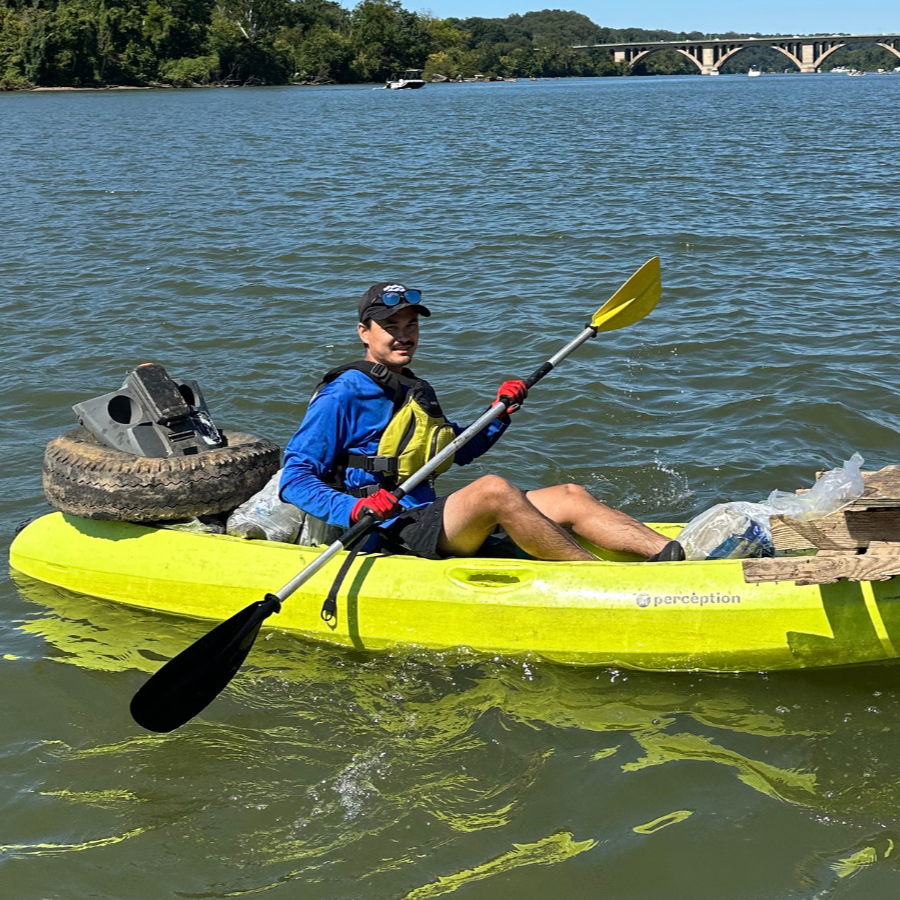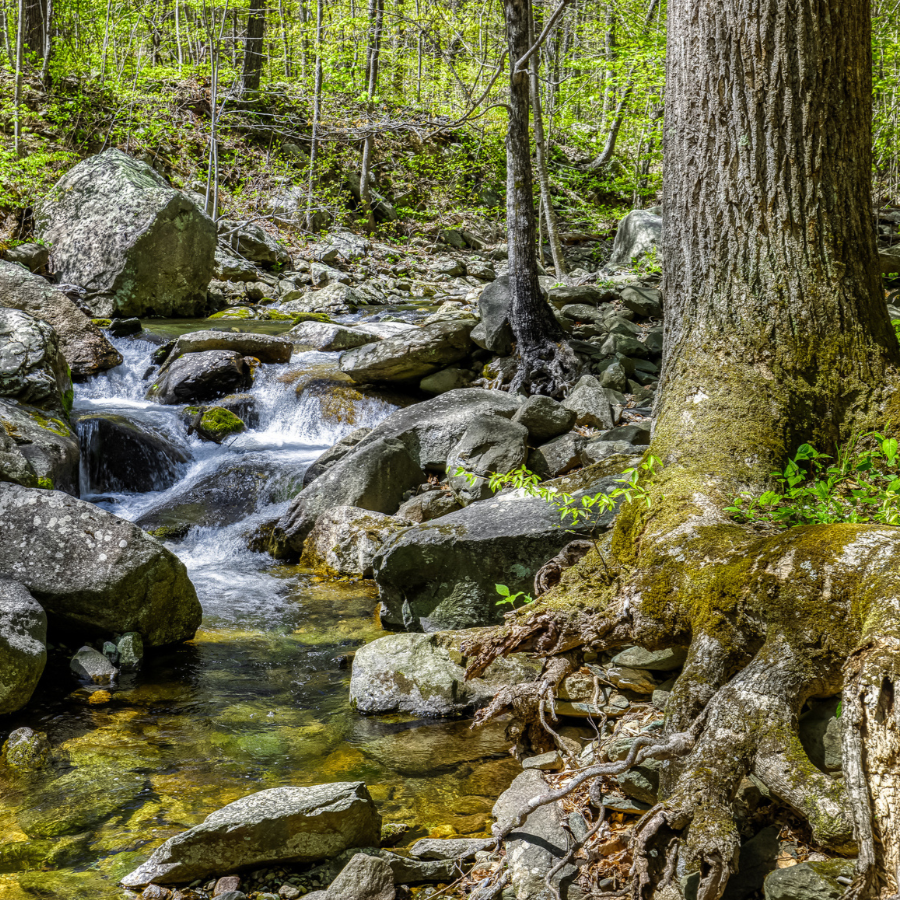Rising salt levels in the Potomac River threaten wildlife, drinking water.
/Learn why local streams are getting saltier – and what we can do about it.
Photo via Flickr bY Tom Saunders, VDOT, licensed under CC BY-NC-ND 2.0
Snow has certainly not been a stranger this winter.
Last month’s snowstorm that left hundreds of drivers stranded on I-95 in Virginia reminds us that proper snow planning is crucial to keep drivers safe in snowy weather.
Traditionally, that means using rock salt—and lots of it—to keep snow and ice from freezing on pavement.
But where does all that salt end up going?
Excess road salt inevitably runs off into streams and rivers, increasing salinity levels and harming the fish and aquatic plants that live in freshwater.
Rising salt levels in our rivers
Photo by Bob Hirsch
The US uses about 20 million metric tons of rock salt on its roads every winter, according to the Cary Institute of Ecosystem Studies in New York, and this salt is finding its way to rivers all over the country.
"The rivers of those parts of the US that have snow and use road salt are all becoming saltier over time,” said Bob Hirsch, a former board member of Potomac Conservancy and former Chief Hydrologist of the US Geological Survey, who also co-authored a 2015 paper on rising salinity of rivers. The study found that the problem has been worsening over time due to more salt being dumped on roads than in the past.
And the Potomac River and its tributaries are no exception.
“It is a problem anywhere in the Potomac watershed where pavement makes up a significant fraction of the watershed area," Hirsch said.
The Washington Suburban Sanitary Commission (WSSC) has recorded increases of salt levels in the Potomac River, showing a 230% increase in 2021 compared to 30 years ago.
Muddy Branch, a Montgomery County tributary of the Potomac River, has also experienced a rise in salinity. The Muddy Branch Alliance and the Izaak Walton League have found that chloride levels in the stream were extremely high for more than a quarter of 2021. Levels exceeded 250 milligrams per liter, compared to normal levels of 20 to 40 milligrams per liter.
Salt’s dark side
Salt may seem like a fairly innocent mineral but it comes with a huge cost. The US EPA estimates that the use of road salt results in approximately $5 billion in damages to cars, trucks, bridges, and roads each year.
Salty runoff can also contaminate sources of drinking water. Sodium in drinking water should not exceed 20 mg/L, but the average level for the Potomac River is 17.60 mg/L, a troubling upwards trend according to WSSC.
High salt levels in drinking water are a problem for people with high blood pressure or kidney disease. It can also make drinking water more corrosive, causing the release of lead into the water in buildings served by pipes made of lead, resulting in the kind of lead poisoning that happened in Flint Michigan.
It’s not just a problem for our drinking water, either. Fish dealing with saltier water might have a harder time finding food.
“The insects that live in our rivers thrive on fresh water and this increased salt destroys their habitat and causes their populations to decline,” Hirsch said. “These insects are the main food source for the fish in our rivers.”
Rock Creek, an urban tributary of the Potomac flowing from Montgomery County, MD, through DC, showed a huge spike in salinity after a storm in mid January, according to USGS monitoring data. Automatic monitoring of salinity is carried out by the USGS at several locations in the Potomac watershed, so you can check out the data in real time. They have sensors in the water that measure the ability of the water to conduct electricity, because dissolved salt is a good conductor. Higher salinity means higher conductivity.
Graph by USGS. Conductance of water at rock creek at Joyce road, washinton, dc, for a week in January 2022.
According to the EPA, a healthy range for most rivers is between 150 and 500 µhos/cm. Levels outside this range might mean that water is not suitable for certain fish. Even without the spike from the storm, the measurements from Rock Creek were well over the upper limit of this range.
The Potomac River at the Little Falls Pumping Station, located where the Potomac River flows into Washington DC, is another example of rising salt levels, showing high conductance this January, according to monitoring data from USGS.
Graph by USGS. Conductance of water near washington DC Little Falls pumping station for a week in January 2022.
And saltier rivers aren't just a problem to worry about in the winter. Overusing salt has lasting consequences for local environments.
“We also found that the salt is getting into the groundwater in urban areas,” Hirsch explained. “This is important to the rivers because when we have dry periods in the summer, the flow of the river is sustained by groundwater that naturally flows into the river.”
This means salt can continue to plague rivers even in the warmer months!
3 ways we can help stop being so salty
1) Tell your leaders to support low-salt solutions
According to Potomac Conservancy’s Climate Report, scientists believe the changing climate is intensifying storms and increasing precipitation in the Potomac River region. A warmer atmosphere can hold greater moisture which results in higher rainfall or snow, depending on the season.
So, the need for river-friendly solutions to keep our roads safe in snowy conditions is not going away. Fortunately, there are ways to use less salt, and keep our roads and rivers safe.
Photo via Flickr by Seth Granville, lincesed under CC BY-NC 2.0
One solution is to use a saltwater brine to treat roads instead of the traditional rocksalt. The brine contains less salt but is just as effective.
Maryland has been putting the brine to good use. Maryland Department of Transportation State Highway Administration (MDOT SHA) has been pre-treating roads with a salt brine solution of 22% salt, 78% water.
The result? Maryland’s SHA has cut its salt use in half in the past five years.
Last year, Northern Virginia published its salt management strategy to encourage salt reduction in winter, including ways to salt more efficiently and explore alternatives to traditional techniques.
DC has also been working to reduce their use of salt by testing alternatives like salt brine and calcium magnesium acetate, which is safer for rivers, plants, and pavement than rock salt.
“To date we have prioritized treatment of roadways, training over 300 snow plow drivers each year on stormwater pollution prevention and launching a pilot this winter to test alternatives to rock salt for managing icy roadways,” said Jonathan Champion, Associate Director of the Water Quality Division at DOEE.
“This pilot is testing Calcium Magnesium Acetate as one alternative, as well as different application approaches like pre-wetting road salt with brine solution,” Champion said. “Based on the results of this pilot, the District will consider incorporating these alternative measures into its snow and ice management plan.”
Implementing alternatives to rock salt on a wide scale will greatly improve the health of rivers and streams, so email or call your local leaders and transportation agencies to support low salt usage to reduce water pollution. Let’s get vocal!
2) Do your part to reduce salt on driveways and sidewalks
Folks who live in places with high snowfall, don’t typically use a lot of salt on walkways or roads. It would be costly and rather ill-advised since more snow and ice is around the corner. Instead, these communities rely on good footwear and materials that provide traction.
Safety comes first, of course, so use your judgment and try out these nICE tips on your driveways and sidewalks:
If you can, clear walkways before snow turns icy
Use de-icers sparingly
Consider using sand or natural clay cat litter to get traction instead of salt
If you have used de-icers, sweep up anything remaining after the snow
3) Become a community scientist
Help monitor salt pollution in our streams and gather data to convince officials that salts should be regulated by participating in Winter Salt Watch, a community science initiative by the Izaak Walton League of America.
Visit their website to request a salt testing kit, download the app, and see other stream-testing results from around the country! https://www.iwla.org/water/stream-monitoring/winter-salt-watch


















